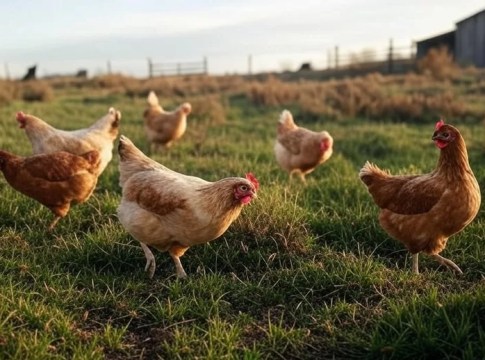Use of Animals in Pest Control: A Permaculture Approach
Permaculture, a holistic and sustainable approach to agriculture, encourages the integration of various natural pest control methods to maintain a healthy and productive ecosystem.
One of the key principles of permaculture is the use of animals in pest control, which can effectively reduce pest populations without relying on chemical pesticides.
This essay explores the role of animals in pest control within permaculture systems, alongside other complementary practices such as sound management and husbandry, plant-derived insect sprays, plant competition, biological control agents, insect traps, artificial feeding and attractants, and mechanical management and barriers.
The Role of Animals in Pest Control
In permaculture, animals play a crucial role in managing pest populations. Various species can be integrated into the system to naturally control pests, enhancing biodiversity and ecosystem health.
Chickens and Ducks
Chickens and ducks are highly effective at controlling insect pests. Chickens scratch the soil, eating insects, larvae, and weed seeds, which helps to reduce pest populations and improve soil health. Ducks, particularly in wetland areas, are excellent at controlling slugs, snails, and other insects. Their foraging behavior naturally reduces pest numbers while providing eggs and meat as additional benefits.
Birds
Birds, such as swallows and bluebirds, are natural predators of insects. Encouraging bird populations by installing birdhouses, feeders, and water sources can significantly reduce insect pests. Birds consume a wide variety of pests, including caterpillars, beetles, and flies, helping to maintain a balanced ecosystem.
Bats
Bats are nocturnal insectivores that play a vital role in controlling night-flying pests such as moths and mosquitoes. Installing bat houses can attract bats to the area, providing effective pest control during nighttime hours. Bats consume large quantities of insects, making them valuable allies in permaculture systems.
Predatory Insects
Beneficial predatory insects, such as ladybugs, lacewings, and predatory beetles, are essential for natural pest control. These insects prey on harmful pests like aphids, caterpillars, and mites. Creating habitats that support these beneficial insects, such as planting flowering herbs and native plants, enhances their presence and effectiveness in the garden.
Complementary Practices in Permaculture
In addition to using animals for pest control, permaculture encourages several complementary practices to create a resilient and balanced ecosystem.
Sound Management and Husbandry
Practicing sound management and husbandry is crucial to discourage soil and leaf pests. This includes maintaining healthy soil through organic amendments, proper irrigation, and crop rotation. Healthy plants are more resistant to pests and diseases, reducing the need for intervention.
Plant-Derived Insect Sprays
Permaculture supports the use of plant-derived insect sprays, such as pyrethrum and neem extract (Azadirachta indica). Pyrethrum, derived from chrysanthemum flowers, is effective against a wide range of insects. Neem extract disrupts insect feeding and reproduction, making it a powerful tool for pest control. These natural sprays are less harmful to beneficial insects and the environment compared to synthetic pesticides.
Plant Competition
Using plant competition to control land and aquatic weeds is another effective strategy. Planting cover crops and ground covers can suppress weed growth by outcompeting them for light, water, and nutrients. In aquatic systems, planting native aquatic plants can help control invasive species by occupying available space and resources.
Biological Control Agents
The release of biological fungus and bacteria, such as Bacillus thuringiensis (Bt), is a key aspect of permaculture pest control. Bt is a naturally occurring bacterium that produces toxins harmful to specific insect larvae while being safe for humans, animals, and beneficial insects. It is particularly effective against caterpillars and beetle larvae.
Insect Traps and Behavioral Chemicals
Using insect traps and behavioral chemicals, such as pheromone traps, can effectively monitor and reduce pest populations. Pheromone traps attract specific pests, making them useful for targeted pest control. These traps can provide early warning of pest infestations, allowing for timely intervention.
Artificial Feeding and Attractants
Artificial feeding and attractants can induce predator species to the orchard or garden site. Providing food sources, such as nectar plants for predatory wasps and hummingbirds, can attract these beneficial species. Supplementary feeding stations can also support populations of predatory insects and birds.
Mechanical Management and Barriers
Mechanical management and barriers are essential components of permaculture pest control. Hand-picking insects and snails, applying sticky goo around trunks of fruit saplings to discourage climbing insects, and using diatomaceous earth around garden beds to deter slugs and snails are effective non-chemical methods. These techniques physically remove or block pests, reducing their impact on crops.
Animals in Pest Control summary
The use of animals in pest control, along with complementary practices, is a cornerstone of permaculture. By integrating chickens, ducks, birds, bats, and predatory insects into the system, permaculture creates a balanced and resilient ecosystem that naturally manages pest populations.
Sound management and husbandry, plant-derived insect sprays, plant competition, biological control agents, insect traps, artificial feeding and attractants, and mechanical management and barriers further enhance the effectiveness of pest control.
Embracing these practices not only promotes sustainable agriculture but also contributes to the overall health and biodiversity of the ecosystem.
Permaculture Design Certificate Course Index
You’ve caught us moving the Permaculture Design Certificate PDC course into our new website. More stories and content coming in the next week …
17. Permaculture – Aquaculture & Mariculture
* Freshwater Aquaculture: Sustainable Farming on Inland Waters
* Sustainable Aquaculture: Effective Pond Systems
* Home Hydroponics System Setup Guide for Growing Perch
* Aquaculture: Towards Sustainable Seafood Production
18. Waste Water Disposal & Recycling
19. Wildlife Management & Pest Control
* Integrated Pest Management
* Herbs and Plants That Repel Insects
* Use of Animals in Pest Control (you are here)
* Wildlife Management: Encouragement and Discouragement Strategies
20. Seed Saving
Related stories
The ImPossible House: Living Off the Grid in the City
A solar passive home on a productive suburban block
Advertisement:




